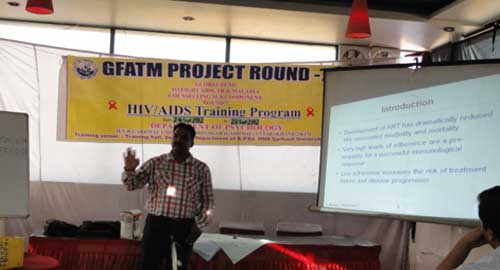|
|
Integrated Counselling & Testing Centres
Integrated Counselling and Testing Centre (ICTC) HIV counselling and testing services were started in India in 1997. There are 163 ICTC/FICTC/PPP mode/Urban health Centre Mobile ICTC van established in Uttarakhand to provide services to all clients under one roof. An ICTC is a place where a person is counselled and tested for HIV, of his own free will or as advised by a medical provider. The main functions of an ICTC are:
• Conducting HIV tests
• Providing basic information on the modes of HIV transmission, and promoting behavioural change to reduce vulnerability.
• Link people with other HIV prevention, care and treatment services.
Ideally, a health facility should have one integrated counselling and testing centre for all groups of people. However, an ICTC is located in facilities that serve specific categories such as pregnant women. Accordingly, an ICTC is located in the Obstetrics and Gynaecology Department of a medical college or a district hospital or in a maternity home where the majority of clients who access counselling and testing services are pregnant women. The justification for such a centre is the need for providing medical care to prevent HIV transmission from infected pregnant women to their infants. Similarly an ICTC is located in a TB microscopy centre or in a TB sanatorium, where the majority of clients are TB patients. As TB is the most common co-infection in people with HIV, availability of HIV counselling and testing can help patients to diagnose their status for accessing early treatment.
• Conducting HIV tests
• Providing basic information on the modes of HIV transmission, and promoting behavioural change to reduce vulnerability.
• Link people with other HIV prevention, care and treatment services.
Ideally, a health facility should have one integrated counselling and testing centre for all groups of people. However, an ICTC is located in facilities that serve specific categories such as pregnant women. Accordingly, an ICTC is located in the Obstetrics and Gynaecology Department of a medical college or a district hospital or in a maternity home where the majority of clients who access counselling and testing services are pregnant women. The justification for such a centre is the need for providing medical care to prevent HIV transmission from infected pregnant women to their infants. Similarly an ICTC is located in a TB microscopy centre or in a TB sanatorium, where the majority of clients are TB patients. As TB is the most common co-infection in people with HIV, availability of HIV counselling and testing can help patients to diagnose their status for accessing early treatment.

Early Infant Diagnostic:
EID is typically done on babies born to mothers with HIV. Blood from the exposed baby is blotted on a filter paper, which is then couriered to a testing laboratory. The test is able to show as early as six weeks of age whether a baby is infected. This is important for the following reasons:
1. It allows early identification of babies who do not have HIV and reinforcement of infant feeding counseling to ensure the babies remain HIV negative.
2. Infants with HIV are rapidly identified and placed on antiretroviral therapy to reduce morbidity and mortality.
3. It allows objective determination of the effectiveness of prevention efforts, helping us understand what works and what doesn’t.
|
Copyright © Uttarakhand State AIDS Control Society.
All Rights Reserved. Designed and Managed By @ Trade In Services |

|